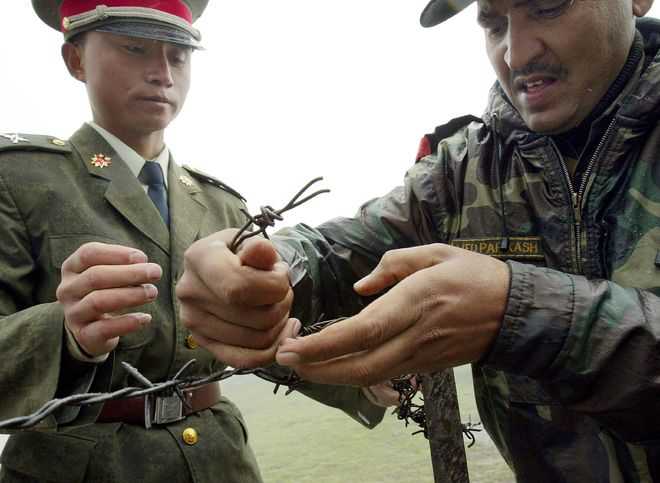
Bhai bhai’ again: India and China have agreed to withdraw their troops from the disputed Doklam territory. file photo
Ajay Banerjee
Tribune News Service
New Delhi, August 28
India and China today ended what was their second longest standoff along the un-demarcated Line of Actual Control (LAC). An important lesson was repeated that militarily it’s important to stand ground against China.In this case, India was standing in for friend Bhutan. The end of the 74-day stand-off at Doklam plateau came after a small statement from the Ministry of External Affairs (MEA) this morning.(Follow The Tribune on Facebook; and Twitter @thetribunechd)On its part, the Indian side had dug in its heels in the military stand-off at Doklam. It was reminiscent of a similar event at Sumdrong Chu (October 1986 to May 1987) in north-western part of Arunachal Pradesh.The eight months at Sumdrong Chu were the longest stand-off between the two armies. In comparison, the one at Doklam lasted just 74 days even though things had been simmering since May this year when China stopped the Mansarvoar Yatra through Nathu La in eastern Sikkim. In October 1986, Chinese leader Deng Xiaoping warned India that China would have to “teach India a lesson”. Almost similar were the words this time. On the Indian side, indications were clear that it will let diplomacy prevail over the “bayonets”.The key difference between 1986 and now was the changes in India-China relations. Post the Sumdrong Chu incident, the then Prime Minister Rajiv Gandhi had paid a visit to China. It was peak of the ‘Cold War’ (1945-1991) between the US and the then USSR. India, though officially non-aligned, was seen with the ‘Soviet camp’.Since 1993—the time line, incidentally, coincides with the economic rise of India and China—the two countries have had a few key treaties, which have ensured peace along the LAC. There have been a series of agreements that dictate the conduct of soldiers and also how a high-powered committee with members of both sides will sort out matters.These treaties came in handy this time for negotiators. Also in the past decade, India has “militarily tailored” its defences along the Himalayas. A repeat of the 1962 debacle was just not possible in 2017.In early 2004, India stepped up efforts to secure areas along the 3,488 km long LAC—the de facto boundary—aligned on an east-west axis in the Himalayas.
